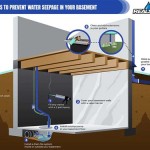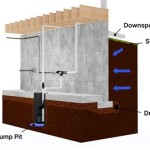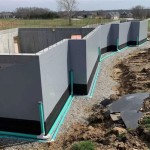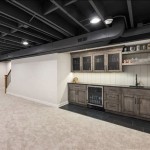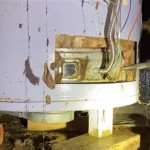Essential Aspects of Portable Air Conditioner Basement Window
Portable air conditioners offer a convenient and efficient way to cool down your basement, especially if it lacks central air conditioning. However, proper installation is crucial to ensure optimal cooling performance and prevent any potential issues. One important aspect to consider is the basement window, which serves as the exhaust point for the warm air removed from the space.
Window Compatibility
To use a portable air conditioner with a basement window, you need to ensure that the window has a casement or double-hung design. Casement windows open outward, while double-hung windows have two sashes that slide vertically. These window types allow for the installation of a window exhaust kit, which includes a flexible duct that connects to the air conditioner and a window seal to prevent warm air from leaking back into the room.
Exhaust Kit Selection
Choosing the richtige window exhaust kit is essential. Look for kits that are compatible with your portable air conditioner model and the size of your window. Kits typically come with adjustable parts to accommodate different window sizes. The window seal should be made of durable material to create a snug fit and prevent air leaks.
Window Seal Installation
Properly installing the window seal is crucial. Follow the instructions provided with the window exhaust kit carefully. Ensure the seal fits tightly around the edges of the window and the exhaust hose. Any gaps or leaks will allow warm air to escape, reducing the cooling efficiency of the air conditioner.
Positioning the Air Conditioner
Once the window seal is installed, position the portable air conditioner near the window. The exhaust hose should reach the window without any kinks or bends, as these can obstruct airflow and reduce cooling performance. Use the adjustable parts of the window exhaust kit to ensure a secure fit between the exhaust hose and the window seal.
Drainage Considerations
Portable air conditioners collect condensation as they dehumidify the air. Most units have a built-in water tank that needs to be emptied periodically. However, some models allow for continuous drainage through a drain hose. If your basement has a floor drain, you can use the drain hose to eliminate the need for manual emptying.
Energy Efficiency
When using a portable air conditioner in your basement, consider energy efficiency. Look for units with high Energy Efficiency Ratio (EER) ratings, which indicate how many BTUs of cooling are produced per watt of electricity consumed. A higher EER means more efficient operation and lower energy costs.
By following these best practices and paying attention to the essential aspects outlined above, you can ensure that your portable air conditioner operates optimally and effectively cools down your basement, providing a comfortable and cool environment.

Custom Portable Ac Window Kit For Awning And Basement Windows

Custom Portable Ac Window Kit For Awning And Basement Windows

How To Install A Portable Air Condition In Small Basement Window

Awning Hopper Window Exhaust Vent Kit For Lasers And Portable Ac Units Youtube

Hvac 10xhvac Plumbing Tradesman Construction Homemaintenance Decor Interiordesign Backyardvibes Interiordesigner Housetour Realestate

5 Best Options For Cooling Your Basement

Portable Air Conditioner Window Vent Kit Apack5 The Home

Portable Ac Window Vent Kits Custom Made

Portable Air Conditioners Faq Sylvane

Portable Ac Window Vent Kits Custom Made
See Also


